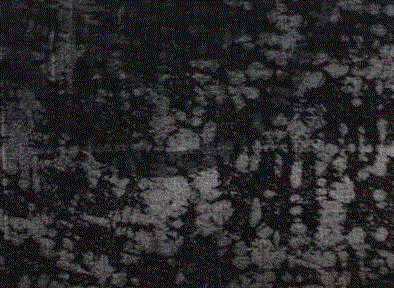Micro-alloyed cast iron glass die and making method thereof
A glass mold and micro-alloying technology, which is applied in the field of cast iron glass mold and its manufacturing, can solve the problems affecting the anti-oxidation performance, and achieve the effect of stabilizing the performance of the glass mold and excellent anti-oxidation performance
- Summary
- Abstract
- Description
- Claims
- Application Information
AI Technical Summary
Problems solved by technology
Method used
Image
Examples
Embodiment 1
[0023] Step 1, according to the mass percentage of each component C3.58%, Si1.95%, Mn0.52%, Cr0.05%, Ni0.10%, Mo0.55%, V0.07%, Ti0.19%, Cu0 .02%, the rest is Fe, select raw materials and add them to the smelting furnace to stir and smelt to obtain molten iron, and the smelting temperature is 1535°C;
[0024] Step 2, select 75 ferrosilicon inoculants accounting for 0.2% of molten iron weight and 0.5% of silicon barium inoculants accounting for molten iron weight to mix and inoculate as common inoculants;
[0025] Step 3. The inoculation process is carried out by inoculation with flow + inoculation in the bag + inoculation in the cavity. The proportion of the common inoculant is 40% of the total weight of the common inoculant during inoculation with the flow, and the proportion of the common inoculant is 40% of the total weight of the common inoculant during inoculation in the bag. 40% of the total weight of the inoculant, and the proportion of the co-inoculant for inoculation i...
Embodiment 2
[0029] Step 1, according to the mass percentage of each component C3.55%, Si1.89%, Mn0.55%, Cr0.07%, Ni0.08%, Mo0.52%, V0.07%, Ti0.10%, the rest For Fe, select raw materials and add them to the smelting furnace to stir and smelt to obtain molten iron. The smelting temperature is 1530°C;
[0030] Step 2, select 75 ferrosilicon inoculants accounting for 0.3% of molten iron weight and 0.6% of silicon barium inoculants accounting for molten iron weight to mix and inoculate as common inoculants;
[0031] Step 3. The inoculation process is carried out by inoculation with flow + inoculation in the bag. The ratio of co-inoculants is 40% of the total weight of the co-inoculants during inoculation with the flow, and the ratio of co-inoculants is 40% of the total weight of the co-inoculants during inoculation in the bag. 60%.
[0032] Step 4. Pour molten iron into the sand mold and control the pouring temperature to 1385°C. After pouring, take out the glass mold from the sand mold for a...
Embodiment 3
[0035] Step 1, according to the mass percentage of each component C3.65%, Si1.85%, Mn0.50%, Cr0.1%, Ni0.05%, Mo0.50%, V0.06%, Ti0.20%, Cu0 .10%, the rest is Fe, select the raw materials and add them to the smelting furnace to stir and smelt to obtain molten iron. The smelting temperature is 1540°C;
[0036] Step 2, selecting 75 ferrosilicon inoculants accounting for 0.2% by weight of molten iron and mixing silicon barium inoculants accounting for 0.6% by weight of molten iron as common inoculants for mixed inoculation;
[0037] Step 3. The inoculation in the bag + inoculation in the cavity is used for inoculation treatment. The ratio of the co-inoculants for inoculation in the bag is 60% of the total weight of the co-inoculants, and the ratio of the co-inoculants for inoculation in the cavity is the total weight of the co-inoculants. 40% by weight.
[0038] Step 4. Pour molten iron into the sand mold and control the pouring temperature to 1380°C. After pouring, take out the gla...
PUM
 Login to View More
Login to View More Abstract
Description
Claims
Application Information
 Login to View More
Login to View More - R&D
- Intellectual Property
- Life Sciences
- Materials
- Tech Scout
- Unparalleled Data Quality
- Higher Quality Content
- 60% Fewer Hallucinations
Browse by: Latest US Patents, China's latest patents, Technical Efficacy Thesaurus, Application Domain, Technology Topic, Popular Technical Reports.
© 2025 PatSnap. All rights reserved.Legal|Privacy policy|Modern Slavery Act Transparency Statement|Sitemap|About US| Contact US: help@patsnap.com

